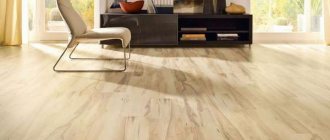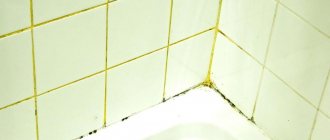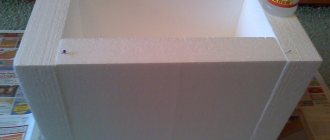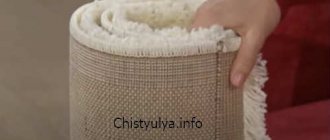What types of damage can occur to laminate flooring?
Laminate flooring is reliable and durable, resistant to many impacts. It is easy to clean: if necessary, it is enough to do dry cleaning using a vacuum cleaner, and less often - a damp, soft, wrung-out cloth.
But if it is not installed correctly or if it is used incorrectly, the laminated coating can age prematurely and even lose its working condition.
The most common flooring defects are:
- Gaps between laminated boards:
- Swelling of the coating due to exposure to moisture or water:
- Single or multiple scratches on the coating:
- Chips or holes are the result of mechanical damage to the material:
Any damage to one degree or another spoils the appearance of the floor covering and leads to more serious consequences in the future: deformation of the panels or breakage of the locking joints with subsequent repair of the covering, and sometimes it will require its replacement. Therefore, it is necessary to immediately begin to deal with defects.
Most often, many damages can be eliminated on your own, but you must first find out the cause of the defect, then choose the right way to eliminate it.
We solve problems
Most difficulties are resolved without complications.
Inaccurate wall gaps
In this case, it is enough to knock out thin wedges where the indents are too large, and saw the boards in places where the distance to the walls is insufficient. Why is this so important? The correct gaps are needed so that the load is evenly distributed over the coating. This is protection against overload and distortion.
Humidity
To restore dried boards, just wash them with a damp (not wet!) cloth and do not wipe them dry. To avoid problems in the future, you should install a humidifier in the room or move the dryer with wet laundry here once or twice a week.
We recommend: How to make clear ice without bubbles at home?
If dampness has corroded the boards and they have become warped, one solution is to disassemble the covering, put it under a press and let it dry. But the press must be perfectly level and cannot be moved; in general, the probability of success is low.
Miss Clean magazine strongly recommends following the rules for caring for laminate flooring: dry vacuuming 1-2 times a week and wet cleaning once every 7 days. There should be no puddles left on the floor, so preference should be given to microfiber cloths and products that do not need to be washed off.
Small trash
A special turbo brush for a vacuum cleaner, a regular brush with long bristles of medium hardness, or a simple wide brush for painting or repairs will help remove accumulated dust and small specks from the locks.
However, if the debris remains or is under the boards, they will have to be lifted, otherwise the creaking and unpleasant crackling will be constantly repeated.
Laying on a poor base
With this problem, all that remains is to remove the entire laminate before it breaks, make a concrete screed, let it harden and reassemble the floor covering.
Causes of cracks
Everyone understands the appearance of scratches, holes and chips in laminated panels - the cause is mechanical damage from hard or sharp objects. But why do cracks appear in the laminate? There may be several reasons:
- The first reason for the appearance of cracks may be the joining of panels when laying from different manufacturers. Such laminated boards may have incompatible or poorly compatible locking systems, which, when connecting the panels, either do not snap into place or do not snap into place properly, becoming loose during use of the coating;
- Quite often, cracks in the joints of laminate lamellas appear when laying laminate on an uneven base. They do not appear immediately after installing the floors, but after some time. For a certain period of time, the underlay layer compensates for the unevenness of the base, but after it is compacted, free space is formed under the floor covering, and the boards begin to gradually diverge;
- do not be surprised if cracks appear on the laminate when cheap, i.e. low-quality laminated material is used to install the floor. Such models have very unreliable locking systems; they soon begin to weaken the connection with adjacent boards, which does not occur without consequences. By the way, the quality of the underlay material also plays an important role in the reliability of the floor covering;
- cracks may not appear immediately after laying the laminate, but after some time for the following reason. A change in humidity in a room from high to low causes some drying out of the panels, and gaps appear between them. This happens in winter, when the air becomes drier with strong heating in the room. But the situation will improve when the humidity normalizes. To avoid this, you can humidify the air inside the apartment during the heating season - with appliances or by any available method;
- The most common reason for the formation of cracks between laminate panels is prolonged exposure to moisture and water. This could be a flood, or simply the presence of any liquid on the surface of the coating for a long time, for example, leprosy of pets. The consequence in this case may be not only the formation of cracks, but also the deformation of some or all of the laminated panels;
- Failure to comply with technological gaps or their insufficient size can also cause cracks in the laminate floor covering. When installing laminated floors, be sure to leave a technological gap (gap) between the panels and each wall, near pipes and doorways, of at least 10-15 millimeters. Otherwise, the floor may rise with the formation of waves and cracks.
It is necessary to understand that cracks in a laminated coating are not only a cosmetic defect that spoils the appearance of the coating. If they are not noticed or ignored, the consequences will be serious. The cracks provide water with free penetration into the inner layers of the panels, they swell quite quickly, and soon the entire floor is deformed.
How to repair laminate flooring yourself
No matter how carefully you treat your laminate flooring, various types of defects may occur. Some of them can actually be eliminated with your own hands without additional purchase of new material. Having the necessary means at hand, you can repair cracks, chips and scratches on the surface.
Laminate is a base, most often made of chipboard, which is protected by several layers of moisture insulation and special resins. A pattern that imitates the color and texture of wood is a pad made of thick paper, on top of which a layer of acrylic resin is poured.
It is this structure of the decorative material that is the main cause of defects.
In what cases is it possible and most importantly, how to repair laminate flooring yourself
Let's look at the most common surface integrity problems and the factors that cause them.
- Changing the geometry of panels. Blistering of the laminate is the most common defect. It may be caused by improper installation (lack of thermal gaps) or the accumulation of moisture in the fiberboard base has resulted in deformation of the wood fibers.
- The appearance of gaps between the boards. The vast majority of laminate installations use the locking method of connecting panels (the adhesive method is less common).
- Surface damage – formation of chips, cracks and crevices. The reason for this is a large mechanical impact - heavy furniture, walking in high-heeled shoes, etc. Small defects can be eliminated using repair mastic or a wax pencil. However, individual boards may need to be replaced.
For all these defects, there are certain elimination technologies. But before choosing one or another repair method, you need to determine the reason. And only after that you can start working.
How to repair cracks in the coating
Why does laminate come apart? There may be several reasons for this.
- Initial choice of low-quality material. Unfortunately, cheap material or substrate cannot always provide the coating with the required quality.
- A product from different manufacturers, or even the same one, but from different batches, may differ in size or have differences in the configuration of the lock: essentially, either the lock is not fastened reliably and over time the connection becomes weak, or it may simply not fasten. One way or another, when trying to join such panels, small gaps quite often arise.
- The third and most common reason is installation on an uneven floor. The defect does not appear immediately, because for a certain time the unevenness is compensated by the substrate. But several months pass and it becomes denser and loses its shock-absorbing ability and, naturally, the panels come apart.
The gap between the slats is not only a cosmetic defect. They, in turn, can lead to deformation of the entire floor - and this is their main danger. Namely, they open free access, so to speak, to the inside of the laminate, that is, to its inner layers. They do not have moisture-proof impregnation, so they swell quite quickly and deform the surface of the coating.
How to eliminate or disguise cracks?
- If the cracks are caused by unevenness of the base, as a rule, a lining is performed. To do this, the laminate in this area is dismantled and the substrate that has become unusable is removed. If the unevenness is local in nature, it is simply replaced with a denser one. If the extent of the damage is large enough, the base is leveled before laying a new substrate. It is easier and faster to do this with a self-leveling screed.
On a note
This method is only suitable for glueless installation.
- For inexpensive lamellas, wedging is used. That is, wooden wedges are driven between the laminate and the walls, which are located perpendicular to the joint seams in the coating.
- If radical methods for eliminating cracks are not applicable, they are covered to limit the access of water inside. To do this you can use:
- Special putty paste
- the gap is cleaned of dirt and debris,
- cover the edges with tape,
- apply putty that matches the color of the floor,
- level with a spatula and allow to dry,
- remove the tape and wipe everything down with a damp, thick cloth.
This is a pretty good method, considering that the sealant is quite elastic, is not subject to shedding or cracking, and is able to withstand constant loads.
Panel deformation
Professional laminate floor repairs should begin with a careful inspection of the damage site. This is especially true in situations where it has been exposed to water for a long time. A specific design feature of decorative floor panels is that the locks are not protected from moisture. If this part absorbs a large amount of water, it will inevitably change its shape. This may lead to the following consequences.
- The appearance of gaps between panels.
- Surface deformation.
Advice
To eliminate this drawback, it is necessary to determine whether this is really the effect of moisture, and not thermal expansion of the surface.
This can be done using ordinary toilet paper. A small piece of it is placed in the resulting gap. If it becomes wet, then the bloating problem is caused by water. Otherwise, it is necessary to check the presence of a thermal gap between the decorative layer and the wall.
This can be done using the following technology.
- Remove the plinth on the wall to which the long side of the laminate adjoins.
- Make sure there is a small distance between the decorative layer and the wall. Often installers may forget to remove the spacer wedges. They must be removed so that the laminate layer can “breathe”.
After this, you can remove the panel that popped out. Then you need to act very carefully. Many people wonder why laminate flooring comes apart? In most cases, this is due precisely to the lack of a temperature gap.
If the defect location is close to the wall, there is no need to disassemble the entire layer. By knocking out adjacent lamellas, space is freed up for installing the dismantled one. By installing it in the groove of a nearby board, the layer is tapped from the wall. To perform this procedure, you will need a special laminate installation kit.
But this technology is not applicable if the room area is large and the problem arose close to the center. In this case, you will have to disassemble part of the coating to eliminate this defect.
If a large amount of moisture gets on the laminate, you need to dismantle all the panels as quickly as possible. High temperatures should not be used to dry them. The maximum that is recommended is to thoroughly wipe the surface with a dry cloth. After this, each lamella is checked for correct geometry and integrity. If necessary, replacement is carried out.
The installation technology is no different from the standard one. The only feature is the removal of moisture from the surface of the subfloor.
Repairing the floor if there are chips
Another common problem is chips in laminate flooring. Most often they are caused by heavy objects falling on the floor. Unlike scratches, you can’t do it with just a pencil; here you need a special composition, which can be purchased in specialized stores. It can be easily replaced with acrylic sealant. Typically, a white sealant is chosen, to which a dye is mixed, bringing its shade as close as possible to the color of the floor covering.
The sealant is applied directly to the chip. To do this, it is better to use a plastic or rubber spatula. It will not be possible to repair the laminate the first time, since the sealant “shrinks” as it dries. For deep chips, to obtain a smooth surface, the procedure is repeated 3–4 times. You need to make sure that after drying there are no rough spots left on the panels.
Attention
Don't forget, sealant tends to darken as it dries.
A rather interesting option is to grout chips using a homemade mixture of building plaster and sawdust. The components of the mixture are mixed in equal proportions with the addition of a certain amount of water. The resulting mixture should be pasty and homogeneous, reminiscent of toothpaste. If the size of the chip is more than five centimeters, prepare the chip. Then putty is produced.
Scuffs
For a small area, it is recommended to use putty. Restoration of laminate flooring with its help is carried out according to the instructions.
Usually this is a two-component composition to which a dye of a certain shade is added. After cleaning the surface of the damaged board, apply the pre-prepared mixture. After this, it is leveled with a small spatula. For final hardening it will take from 12 hours to 1.5 days. During this time, you cannot walk on the restored surface.
Advice
If the protective layer is missing on at least 20% of the total area of the panel, it must be dismantled and a new one installed.
How to remove cracks in laminate flooring?
Having understood the causes of flooring defects, we will begin to consider options for eliminating them. How to remove cracks that appeared a couple of months after laying the laminate?
- If the cause of the cracks is the laying of the laminate floor on an uneven base, the situation must be corrected thoroughly. That is, it is necessary to dismantle the floor covering, remove the underlayment, inspect it, can it be reused? If not, you need to purchase a new substrate. Next, we proceed to leveling the base. The easiest way to do this is with a self-leveling floor.
Masking cracks and mechanical damage
How to seal cracks in laminate flooring if none of the above options are suitable? Then we think about how to cover the cracks in the laminate to protect it from water getting inside. In addition to cracks, scratches, chips and even holes in the coating should be restored in the same way. There are several ways:
- Using repair paste, you can fill cracks in the laminate. This repair composition can be used to repair not only cracks, but also scratches, chips and even holes on the laminated surface. Repair paste to match the color of the laminate can be purchased at hardware stores that have laminate flooring departments. Before applying the paste, you should read the instructions and act in accordance with them. The paste should be applied with a rubber spatula. After drying, you need to remove the residue with a rag;
- using special grouts. They are made on the basis of sealant. Their advantage is that they do not allow water to pass through, which is exactly what is needed for a laminate floor. And one more thing: they mask other defects besides cracks;
- a deep crack in a panel or a gap between panels can be repaired using a liquid mixture of gypsum with fine sawdust (equal parts), diluted with a small amount of water. First, a wooden insert made to the size of the crack or gap is inserted, then a liquid mixture with the consistency of thick sour cream is rubbed on top;
- To mask a shallow scratch, it is very good to use special wax pencils or colored sealants. They are used for minor damage to the surface when the deeper layers of the panel are not damaged. The color of the pencil or sealant is matched to the color of the surface of the laminated board.
Restoration of damaged laminate
Any floor covering is subject to significant loads, which can lead to damage. For example, over time, scratches, chips, and dents appear on the laminate, and if the locking connection is not of very high quality, gaps form between adjacent panels . Minor defects in laminate flooring are not a reason to change the flooring; they can be eliminated.
Sealing gaps between laminate panels
Correctly laid laminate panels fit closely to each other, but during operation they diverge, forming gaps. The cracks deteriorate the appearance of the floor covering; moisture and debris penetrate into them, so it is advisable to seal them . But first you need to figure out why they appeared - due to the curvature of the base, a violation of the installation technology or the climatic conditions in the room.
Small gaps between the floorboards are often formed due to excessively dry air in the room; to eliminate them, just use a humidifier, and soon the panels will close on their own.
If the laminate was laid on an uneven subfloor or it was not cleared of debris, you will have to disassemble the flooring , properly prepare the base and lay the laminate again; this is the most labor-intensive option. Read about errors when installing laminate flooring and how to eliminate them here.
The reason may lie in the insufficient width of the compensation gaps around the perimeter; in this case, the boards in the places adjacent to the walls will have to be sawed down. If, on the contrary, the seams are too large, spacer wedges must be inserted between the panels and the walls. The same method is used if a cheap coating is laid with insufficiently reliable locks.
There are also less radical ways to eliminate cracks - sealing them with repair compounds :
- Repair paste for laminate flooring to match the color of the panels
- Wood putty
- Seam sealant
- A homemade mixture of gypsum and sawdust, taken in equal proportions and diluted with water to the consistency of toothpaste
- Polyurethane foam
Before applying any composition, the surface of the laminate and the gap must be thoroughly cleaned, and strips of masking tape must be glued to both sides of the gap . Ready-made compositions are applied in accordance with the instructions.
Repairing scratches, dents and chips on laminate flooring
If the protective layer of the laminate is thin and not strong enough, scratches may occur. Small scratches can be covered with a special wax pencil to match the coating , then polished with a dry cloth. For laminate flooring, it is recommended to use hard wax.
Wax well masks small scratches from grains of sand, but if furniture legs, stiletto heels, animal claws or a knife falling on the floor have left deeper damage, other compounds will be needed to eliminate them:
- Melt putty (restoration wax)
- Repair paste (putty for laminate)
- Acrylic lacquer
The melt putty is preheated using a wax melter and applied to a clean, degreased surface. The surface around the scratch should be sealed with masking tape, and the excess should be immediately removed with a damp cloth. After the putty has dried, the treated area must be sanded.
The repair paste is squeezed out of the tube in the required amount and applied with a rubber spatula , the excess is wiped off with a dry cloth. The repaired defect can be coated on top with a special transparent varnish for laminate restoration; it is available in bottles with a brush or in the form of a felt-tip pen.
Acrylic varnish is suitable for eliminating defects on glossy laminate ; it carefully fills the scratch; you need to make sure that the varnish does not get beyond its boundaries.
Small chips and dents, similar to deep scratches, are repaired with putty, restoration wax, acrylic sealant with the addition of dye. Only the composition usually has to be applied in several stages, since after drying it shrinks. For large chips, wood mastic is used , which dries for 8 hours; after drying, it is carefully sanded with fine-grained sandpaper.
Advice: if an area where there is a color transition is damaged, it is better to take dark and light mastic or wax and mix in different proportions to obtain the desired shades. Having filled the chip or dent with a restoration compound of a suitable color, after it has dried, you can apply strokes with a retouching marker to recreate the pattern on the damaged area.
Deep cracks are sealed with a composition of gypsum and sawdust . To reduce its consumption, you can put pieces of wood or chips into the crack.
What to do if there is a hole in the laminate
As a result of the fall of heavy objects, large holes can form on the laminate, which are problematic to repair with a repair compound. Typically, epoxy resin with filler is used to fill large-scale defects, but it is difficult to choose the right proportions, and it quickly lags behind the coating. You can try to make a patch from the laminate scraps remaining after the repair .
The damaged area is cut out with a ring drill, the patch is cut out with a slightly larger diameter drill, the edges are carefully sanded until the patch is in place. The ends are smeared with glue, the patch is recessed to the required depth using a suction cup and rotated so that the pattern matches as much as possible.
If you have a lathe, you can make a patch of a more complex configuration so that it does not fall through. Using a larger diameter drill, cut a circle half the thickness of the laminate, a smaller one – through it, and carefully cut off the upper part. Turn the patch on a machine according to a template so that it turns out to be stepped, like a cork. Cover the seam with a wax pencil.
If you have a whole spare panel, it is best to replace the damaged strip entirely . If you are laying laminate flooring with a latch lock, the covering will have to be partially disassembled to get to the damaged board. If the locking connection does not provide for the possibility of dismantling, or to access the damaged panel it is necessary to almost completely disassemble the covering, it is cut out.
A board with a hole is cut into several parts with a circular saw or jigsaw; first, the middle is cut out to make it easier to remove. The cuts should not be made to the full thickness, so as not to damage the substrate. Parts of the sawn panel are removed using a chisel. The protruding ridges of the panel that will be used instead are cut off, and the ridge from the end of the resulting window in the floor is also cut off.
The edges are cleaned and scratched so that the adhesive composition adheres better. The joints are glued with epoxy resin or liquid nails; it is also advisable to fill the grooves with an adhesive using a syringe. The board is installed in place using a suction cup handle; after installation, it must be pressed down with a weight. After half an hour, the glue squeezed out at the joints is carefully removed with a sharp spatula and the load is put back in place. You cannot walk on the glued area for 12 hours.
Filling deep scratches with hot melt putty Filling small laminate defects with wax chalk Replacing damaged laminate boards
Bottom line
Damage to laminate flooring can be repaired; repair compounds for its restoration—wax, putty, mastic—are usually sold in flooring stores . Their palette allows you to choose the appropriate composition to mask a scratch or chip on laminate of different colors. But it will not be possible to make the defect completely invisible, and besides, this is a temporary measure .
Laminate has poor adhesion to any repair compounds, and after a while the patches fall out. Therefore, it is better to take precautions when using laminate flooring , cover furniture legs with protective covers, do not allow animals into the room, do not walk in heels, avoid dropping heavy objects on the floor, and do proper cleaning. In case of serious damage, it is better to replace the entire panel.
How to prevent the appearance of cracks?
As usual, it is easier to prevent a problem than to fix it later. To avoid future problems with cracks and eliminate them by repairing the floor covering, you must:
- carry out the installation of the laminated floor efficiently, in compliance with the instructions for laying the laminate on a previously prepared and leveled base;
- choose good quality coating and substrate material; When laying the coating, observe the technological gap;
- When using floors, treat the coating with care and carry out proper maintenance;
- If liquid gets on the coating, immediately wipe the liquid with a soft cloth;
- do not move heavy pieces of furniture on the surface;
- If you find a gap, try to fix it immediately.
Following these rules will help avoid many problems.
Let's summarize what has been said: repairing and eliminating defects in a laminated coating is a completely feasible task for everyone. It’s worth finding out in advance how to fix a scratch on the coating and how to seal a gap in the laminate flooring, so that if a defect is discovered you won’t get confused and correct the situation.
How to line laminate boards with small cracks
Single cracks can form over time for various reasons. They can also be eliminated in just a few minutes. If left as is, debris accumulates in them, which leads to an increase in the gap, and if water gets in, the laminate will most likely swell.
Connecting the locks is very simple; all you need is a hammer, double-sided tape and a block of wood.
The work is carried out as follows:
- From the gap you need to remove dust and debris that will interfere with the tight connection of the locks - a vacuum cleaner works best.
- Adhesive tape is glued to the wooden block on one side and the protective film is removed, after which it is applied to the desired laminate strip. It is advisable to mount it 5 centimeters from the gap.
- The block is held by hand, after which several blows with a hammer are applied to its back in the desired direction. This allows you to move the laminate boards without disassembling the coating. This is how you need to move along the entire laminate, eliminating the cracks until they disappear.
If the laminate has been lying around for a long time and the locks have stopped working, PVC glue can help, which is applied to the ground locks, after which the boards are joined.
These methods will allow you to cope with the appearance of cracks in the laminate. Depending on the complexity of the case, it may be necessary to disassemble the coating, but most often, if the laminate has come apart, the problem can be solved quickly and easily.











